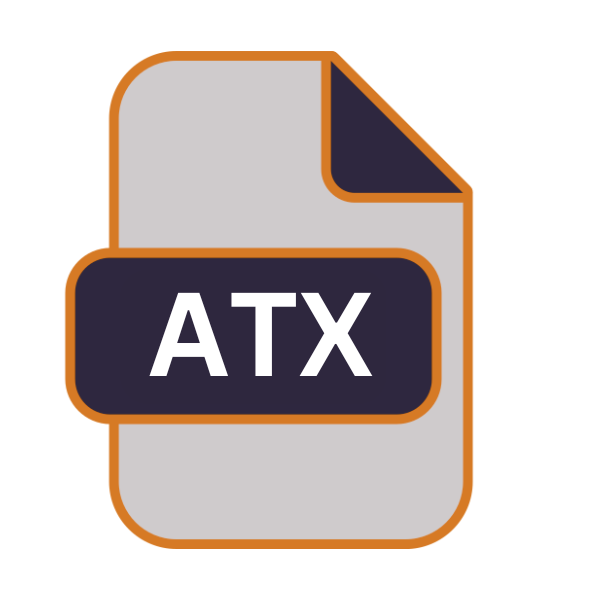.ATX File Extension

What is an ATX file?
The .ATX file extension is primarily associated with ArcGIS, a geographic information system (GIS) software suite developed by Esri.
These files serve as attribute index files, playing a crucial role in efficiently managing and accessing attribute data within GIS projects.
In this article, we delve into the origins, history, structure, technical specifications, advantages, disadvantages, and methods of accessing .ATX files across various operating systems.
More Information.
Introduced alongside ArcGIS, .ATX files were designed to address the challenge of swiftly accessing attribute data within GIS projects.
By creating index files that store attribute information in a structured manner, ArcGIS significantly reduced query times, thereby improving the overall efficiency of spatial data analysis.
Origin Of This File.
The genesis of .ATX files trace back to the development of ArcGIS, which revolutionized the way geographic data is processed, analyzed, and visualized.
Esri introduced these files as a means to optimize attribute data retrieval, enhancing the performance of GIS applications.
File Structure Technical Specification.
The structure of .ATX files are intricately designed to facilitate rapid attribute data retrieval. These files consist of index tables that store attribute values along with pointers to the corresponding spatial features.
The technical specifications of .ATX files vary depending on the version of ArcGIS used, encompassing details such as indexing algorithms, data types supported, and storage optimizations.
How to Convert the File?
Converting .ATX files directly to other formats may not be straightforward due to their specific role within ArcGIS.
There are alternative methods to access attribute data for conversion or interoperability purposes. Here’s how you can approach converting .ATX files:
- Export Attribute Data: Within ArcGIS Desktop, you can export attribute data from the associated feature class or layer to a variety of formats compatible with other GIS software or databases. This can typically be done through the “Export Data” or “Save As” functionality, allowing you to choose formats such as shapefiles, geodatabases, CSV, or Excel files.
- Use ArcGIS Toolbox Tools: ArcGIS provides various tools within its toolbox that enable data conversion and manipulation. For instance, the “Table to Excel” tool allows you to convert attribute tables to Excel spreadsheets, while the “Feature Class to Shapefile” tool facilitates conversion to the widely supported shapefile format.
- Leverage GIS Interoperability: If you intend to use the attribute data in another GIS software, such as QGIS or MapInfo, you can import ArcGIS projects or data directly into these platforms. QGIS, for example, supports the import of ArcGIS projects, enabling seamless interoperability between the two systems.
- Custom Scripting or Development: For more advanced users or developers, custom scripts or applications can be developed to extract attribute data from .ATX files for conversion to other formats. This approach offers flexibility in handling specific data requirements or integration scenarios.
- Utilize Third-Party Tools: While direct conversion of .ATX files may not be possible using third-party tools, there are software solutions available that offer data extraction capabilities compatible with ArcGIS data formats. These tools may provide APIs or utilities to access attribute data programmatically for further processing or conversion.
- Consider Data Exchange Standards: Depending on the intended use case, you may explore data exchange standards such as OGC (Open Geospatial Consortium) standards like GeoPackage or Web Feature Service (WFS). These standards facilitate interoperability between different GIS systems by defining common data formats and protocols for data exchange.
Advantages And Disadvantages.
Advantage:
- Enhanced Data Retrieval: .ATX files expedite the retrieval of attribute data within GIS projects, enabling users to perform complex spatial analyses with minimal latency.
- Optimized Performance: By leveraging index structures, ArcGIS ensures optimal performance even when dealing with large datasets, thus enhancing productivity.
- Improved Data Integrity: The structured nature of .ATX files promote data integrity by reducing the likelihood of errors during attribute data retrieval and manipulation.
Disadvantage:
- File Size Overhead: .ATX files introduce additional storage overhead, particularly for projects with numerous attributes, potentially increasing disk space requirements.
- Compatibility Issues: Compatibility issues may arise when migrating .ATX files between different versions of ArcGIS or when integrating them with other GIS software, necessitating careful consideration during data exchange.
- Maintenance Complexity: Managing .ATX files alongside the associated GIS projects can be complex, requiring periodic maintenance to ensure optimal performance and data integrity.
How to Open ATX?
Open In Windows
ArcGIS Desktop: .ATX files can be easily opened in ArcGIS Desktop, the flagship GIS software for Windows operating systems.
Simply launch ArcGIS Desktop, and navigate to the project containing the .ATX file, and the attribute data will be accessible within the software.
Open In Linux
QGIS: QGIS is an open-source GIS software that supports the import of ArcGIS projects, including those containing .ATX files.
Install QGIS on your Linux system, then open the ArcGIS project file within QGIS to access the attribute data stored in the .ATX file.
Open In MAC
ArcGIS for Mac: Esri offers a macOS version of ArcGIS, providing native support for .ATX files on Apple’s macOS operating system.
Simply install ArcGIS for Mac on your macOS device, open the ArcGIS project containing the .ATX file, and access the attribute data within the software.
Open In Android
ArcGIS Runtime SDK for Android: Developers can leverage the ArcGIS Runtime SDK for Android to build custom GIS applications capable of opening .ATX files on Android devices.
By integrating the SDK into your Android application, you can access and display attribute data stored in .ATX files within your app’s interface.
Open In IOS
ArcGIS Runtime SDK for iOS: Similar to the Android SDK, the ArcGIS Runtime SDK for iOS enables developers to create GIS applications for iOS devices that can open .ATX files.
Integrate the SDK into your iOS application to access and visualize attribute data from .ATX files directly on iPhones and iPads.
Open in Others
Third-Party Converters: While direct opening of .ATX files may not be supported in all software, third-party converters or custom scripts can facilitate accessing and converting attribute data for use in other applications or formats.
Explore available tools or develop custom solutions tailored to your specific needs and platform requirements.













